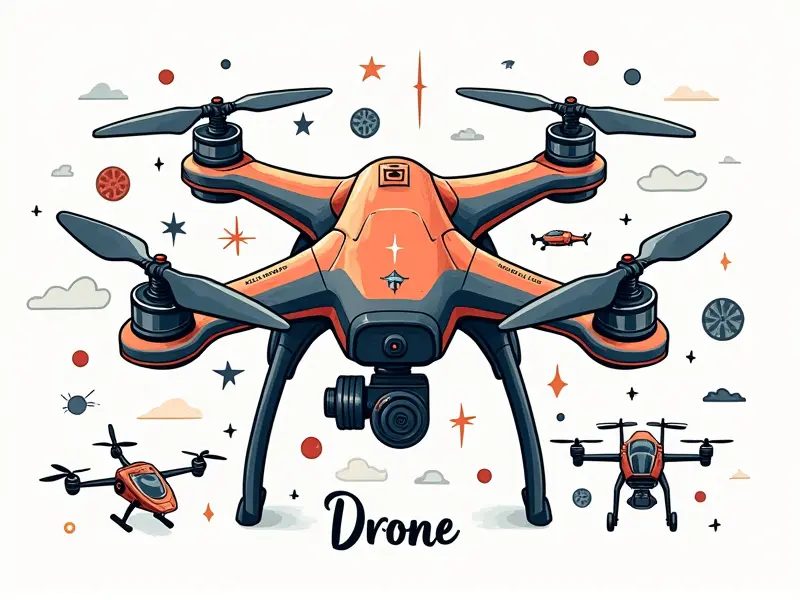How does a brushless motor work?

In the world of remote-controlled (RC) models, brushless motors have revolutionized performance and efficiency. These motors are not only powerful but also offer superior control compared to their brushed counterparts. This article delves into the intricacies of how brushless motors work, exploring their components, benefits, and applications in various RC models such as drones, racing cars, and quadcopters.
Why Brushless Motors Rule RC Models
The transition from brushed to brushless motors has been a game-changer for the RC industry. Brushless motors offer several advantages that make them indispensable:
- Efficiency: Brushless motors convert more electrical energy into mechanical power, reducing heat and improving performance.
- Durability: Without brushes to wear out, brushless motors have a longer lifespan and require less maintenance.
- Power-to-Weight Ratio: They are lighter and produce more torque for their size, making them ideal for high-performance RC models.
How Brushless Motors Power RC Drones
In the realm of RC drones, brushless motors play a crucial role in achieving optimal flight performance. These motors provide:
- High RPMs: They can spin at extremely high revolutions per minute (RPM), allowing for fast and agile maneuvers.
- Precision Control: Brushless motors offer fine-tuned control over thrust, enabling precise hovering and maneuvering.
- Battery Efficiency: The lack of brushes reduces energy loss, extending flight times with the same battery capacity.
Secrets of Brushless Motor Efficiency
The efficiency of brushless motors stems from their design. Key factors include:
- No Commutator Losses: Unlike brushed motors, brushless motors do not have a commutator that causes friction and energy loss.
- Magnetic Field Interaction: The motor's rotor is magnetized, interacting with the stator to generate torque without mechanical contact.
- Electronic Commutation: Advanced electronics manage the switching of current in the windings, optimizing performance and reducing heat generation.
Demystifying Brushless Motors in Drones
To understand how brushless motors work in drones, it's essential to know their internal components:
- Rotor: The rotor contains permanent magnets and rotates within the stator.
- Stator: The stator houses windings that generate a magnetic field when energized by an electronic speed controller (ESC).
Unpacking the Magic of Brushless Motors
The magic behind brushless motors lies in their ability to convert electrical energy into mechanical power without friction. This is achieved through:
- Sensor-less Control: Some brushless motors use sensors or algorithms to detect rotor position and adjust current flow accordingly.
- Voltage Regulation: ESCs regulate the voltage supplied to the motor, ensuring optimal performance under varying conditions.
The Science Behind Brushless Motor Power
The science of brushless motors involves principles from electromagnetism and electronics. Key concepts include:
- Electromagnetic Induction: The interaction between the rotor's magnetic field and stator windings generates torque.
- Electronic Speed Control (ESC): ESCs manage motor speed by controlling current flow to the stator windings.
Breaking Down Brushless Motor Components
A brushless motor consists of several key components:
- Rotor: Contains permanent magnets and rotates within the stator.
- Stator: Houses windings that generate a magnetic field when energized by ESCs.
- Electronic Speed Controller (ESC): Manages motor speed and current flow.
Why Brushless Motors Rule RC Racing
In the high-stakes world of RC racing, brushless motors dominate due to:
- High Torque Output: They provide powerful acceleration and top speeds.
- Lightweight Design: Their compact size reduces overall vehicle weight for better performance.
- Durability: Brushless motors withstand the rigors of racing without compromising reliability.
Understanding Brushless Motors in Quadcopters
In quadcopters, brushless motors are crucial for achieving stability and agility. They enable:
- Precise Control: Fine-tuned adjustments to motor speed allow for smooth flight control.
- Battery Efficiency: Reduced energy loss means longer flight times with the same battery capacity.
- Versatility: Brushless motors can be used in various configurations, adapting to different quadcopter designs.
How Brushless Motors Drive FPV Speed
In first-person view (FPV) racing, brushless motors are essential for achieving high speeds and maneuverability. They offer:
- Rapid Acceleration: Quick bursts of power allow racers to gain an edge in tight corners.
- Battery Management: Efficient energy use ensures sustained performance throughout the race.
- Precision Control: Fine-tuned adjustments enable precise control over flight dynamics.
Inside Brushless Motors: The Tech Explained
The inner workings of brushless motors involve a complex interplay of electromagnetism and electronics. Understanding these components helps in optimizing motor performance:
- Rotor Design: Rotor construction affects magnetic field strength and efficiency.
- Stator Windings: The arrangement of windings influences torque output and heat generation.
- ESC Technology: Advanced ESCs enhance motor control, improving overall system performance.
In conclusion, brushless motors have transformed the RC industry with their efficiency, durability, and power-to-weight ratio. Whether in drones, racing cars, or quadcopters, these motors offer unparalleled performance and reliability. By understanding how they work, enthusiasts can better appreciate the technology that drives modern RC models.

